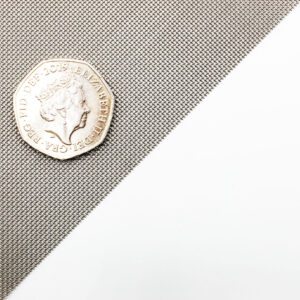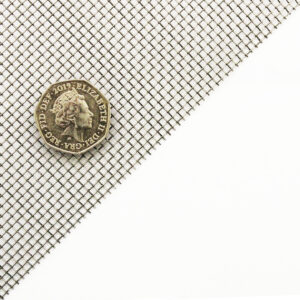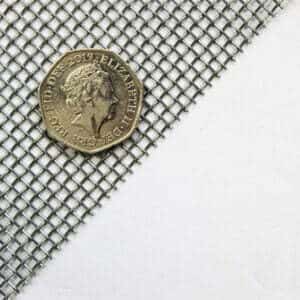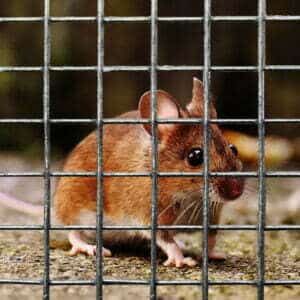







£18.99 – £51.49 inc VAT


This website is secured:
✔ The UK’s Largest Range Of Mesh Products
✔ FREE UK Delivery Included
✔ Immediate Express Dispatch From Stock
✔ Tracked Delivery with Order Updates
✔ 30-Day Returns Accepted
@ ☏ Bespoke Sizes & Larger Sheets Available
The Mesh Company introduces its galvanized steel varroa mesh, expertly designed for beekeeping needs. Boasting 8 holes per linear inch (64 per square inch) and a robust wire thickness of 0.71mm, this mesh offers optimal ventilation with a 60% open area.
The precise 2.47mm aperture ensures protection from pests like varroa mites. Durable and weather-resistant, it’s the ideal varroa floor for beehives, easily cut and customized using tin snips. Experience beekeeping excellence with our superior mesh solution.
2.47mm hole heavy duty galvanised steel varroa floor made from 0.71mm wire. 2.47mm aperture is fairly large to be woven to form a mesh netting, consequently it requires a thick wire to produce. Most importantly, this mesh is strong and long lasting.
The wire thickness is set at a robust 0.71mm, with intersections even more substantial due to wire overlap, guaranteeing longevity and resilience. Its defined hole size, or aperture, of 2.47mm strikes a balanced design, facilitating optimal air circulation while preventing unwanted pests like the varroa mite from infiltrating the hive.
An impressive 60% open area percentage further accentuates the mesh’s emphasis on breathability and environmental regulation, pivotal for maintaining a healthy bee colony. Manufactured with galvanized steel, this mesh promises resistance to weathering, ensuring it stands up to the challenges of external environments while keeping its integrity intact. Moreover, the “varroa floor” serves as a critical line of defense against one of beekeeping’s most dreaded adversaries – the varroa mite, providing bees with a safer and more conducive habitat.
Below are the specifications of this 2.47mm wire heavy duty mesh:
Filters out particles larger than 2.5mm.
By providing a protective barrier against pests, particularly the varroa mite, the Varroa Floor Mesh enhances beekeeping operations without compromising hive ventilation. Crafted with precision, the mesh’s specific design allows for optimal air circulation, ensuring a healthy environment for the bee colony. Additionally, its galvanized steel construction ensures durability and weather resistance, making it an ideal solution for amateurs and professionals alike. Varroa Floor Mesh facilitates better hive health and increased honey production by providing a safer, more conducive habitat for bees.
Installing the Varroa Floor Mesh in your beehive is a straightforward process, but it’s essential to follow some key steps to ensure its effectiveness:
The specific aperture size of the Varroa Floor Mesh offers dual benefits crucial for maintaining a healthy bee colony. First, the 2.47mm aperture size is ideal to facilitate optimal air circulation. Adequate ventilation is paramount in a beehive, as it helps regulate temperature and moisture levels, preventing conditions that favor mold growth and ensuring a comfortable environment for the bees.
Secondly, while the mesh allows for efficient airflow, its design effectively acts as a barrier against varroa mites. If these pests fall off a bee and onto the floor, the mesh’s aperture size prevents them from climbing back into the hive, thus reducing the mite population within the colony. This is a crucial advantage, as varroa mites are a leading threat to bee colonies, transmitting viruses and depleting the health of bees.
In essence, the mesh’s aperture size strikes a perfect balance, promoting hive health by ensuring proper ventilation while acting as a safeguard against the detrimental impact of varroa mites.
We recently published a detailed guide on the benefits of using wire mesh for a floor in your beehive. This article will tell you everything that you need to know to be able to us wire mesh as the bottom layer of your beehive.
Contact our team today if you have any questions at all. We are always really keen to help in any way that we can.
We also offer similar products through our highly popular eBay store, check us out there too.
| Beekeeping Mesh | 450mm x 450mm x 2, 450mm x 450mm x 4, 450mm x 450mm x 8, 450mm x 450mm x 16, 400mm x 500mm x 2, 400mm x 500mm x 4, 400mm x 500mm x 8, 400mm x 500mm x 16 |
|---|
In 2008 Locker Wire Weavers launched The Mesh Company to bring our enormous range of wire mesh products to the general public for the first time. Previously wire mesh was only available for trade customers.
We continue to extend our range, and now proudly offer many forms of mesh and metal products for the best possible prices. We specialise in woven wire mesh. As a group we work closely with architects and designers to develop ground-breaking new applications for our multifunctional range of materials. We also offer state of the art fabrication and engineering for projects of all sizes.
Strong ties with the Warrington community continue to be at the very core of our business. We are proud to invest in the training and developing our staff of all levels in line with the traditions set by Thomas Locker, who founded our group 150 years ago when he invented the electronic loom. We continue to bring ingenuity and strong ethics to our day to day business.
The Mesh Company continues Warrington’s historic role in the wire industry. For more than 140 years, our group has been a leader in the supply and manufacture of woven wire mesh and wire cloth. Having been founded in Warrington, UK in 1878, Locker mesh products still retain the quality craftsmanship and spirit of innovation that were so characteristic then.
Available Options
You will find full rolls of this insect netting here. Please be advised that the majority of woven mesh is usually available in a maximum roll size of 30 metres by 1200mm. Please email us if you wish to discuss purchasing this mesh in any size – sales@themeshcompany.com.
Feel free to call us if you wish to discuss any of our products – (+ 44) 01925 406 602. We are always happy to help in any way that we are able to.
We also offer this product through our highly popular eBay store, check us out there too.




The largest range of wire mesh, chicken wire, wire fencing, woven wire mesh and perforated metal products in Europe, delivered direct from our Warrington warehouse.




Website by: Beech Web Services | Terms and Conditions | Cookie Policy | Privacy Policy | Website Terms and Conditions
Reviews
There are no reviews yet.